20 Feb Ibiquity
One of the main concerns of people in this era of information overload is how to get rid or reduce their information anxiety. That is, how they get qualified information that could help them tell which of the many available options is the best one. Or, how they ger the information they need, just in time, to make a decision that minimizes information anxiety.
For instance, when I am at the underground station waiting for the next train, the information I really need there is how long will it take for the next train to come. Staring at a TV screen that brings me information about events that are happening at the other side of the World (general news) is not going to help me reduce my anxiety, although it may well distract me for a while.
And I would also like to have information on where the next train is exactly at that time. Something that is now possible in places like Switzerland, although only in tests, through systems such as swisstrains.ch (interestingly enough, this project disclaimer specifies that «the current view is based on the Swiss traintimetable, and does not yet show the actual GPS-positions of the trains. But, as Swiss trains are almost always on time, most of the time the position is accurate»).
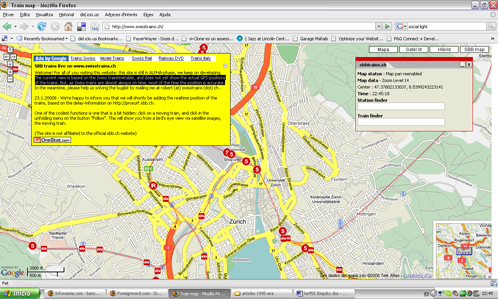
In a similar situation, when waiting for the next bus at a bus stop, the information that I need to decide whether I wait for the bus or I take a taxi, is how long I would have to wait for it. If some device at the stop tells me that the next bus is coming in 2.5 minutes, I might decide to stay there because that time span is reasonable enough. If it tells that the bus is coming in 10, when I am in a hurry, I would take a taxi.
See below two examples of such an anxiety-reduction systems at bus stations in Berlin and Stockholm.
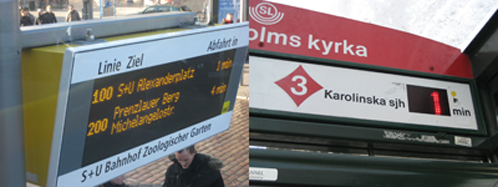
Even more, the ideal information system I would love to have at the bus stop is something like this: I would like to be able to «draw» on the bus map, displayed at the stop stand, with just two fingers (one from my left hand and one from my right one), the start and the end of my journey, so that the system «tells me» (i.e. «answers me») which connections are the best ones, in terms of the traffic congestion at that very moment. Even more, it would tell me how long it will take the whole trip, so that, again, I could decide whether to take a taxi, a public bike, or to walk the walk.
If I decide to take a taxi, I would like to get into contact with the taxis that may be around me at that place. So rather that connect to a central radiotaxi station, I would like to talk to drivers at, say, a maximum of 500 meters from me. Just by using my mobile phone (the system would detect my phone cell and determine which taxis are around by analyzing their GPS signals). Something like this was tested by Zingo in London, although it now seems to be out of service. Zingo was a new concept in street hailing taxis. Passengers could telephone black taxi cabs directly on their mobiles. The call was patched through to the nearest cab by satellite technology.
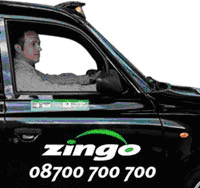
By the way, Zingo is now the brand used by a new service that prompts a driver whenever and wherever you may need it. For instance, when you got too much drinking at that party, and you decide that you need somebody to take you home safely. It is an instant service, on the spot. Zingo provides a fully insured driver that arrives on a folding motorbike, who folds it, bags it, puts it in your trunk, takes your keys, and drives you home.
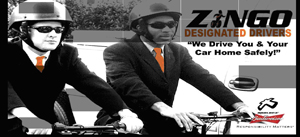
Zingo Transportation, Inc. was founded in October 2005 by Atlanta entrepreneurs Jim Valentine & Charles Barfield. Zingo service originates primarily out of Buckhead, Midtown, and the Highlands, but they will drive you anywhere you need to go in the USA. Indeed, Zingo is sponsored locally by Budweiser. Their webpage clearly states that «Budweiser and their distributors are VERY serious about responsible drinking, and they go way beyond the call of duty with their Consumer Awareness and Education programs.»
Incidentally, if I decide to take a public bike, like the ones distributed across cities like Stockholm or Barcelona (see bicing.com), I would see a difference between having to look for the next bike-stand or getting the bikes randomly spread across streets. This later option is the one proposed by DB in Berlin: bikes are at any place, alone or in groups, and to use it you just need to make a phone call that delivers a code that unlocks the bike (an you pay through the phone bill). Once your trip is done, you leave the bike wherever you want.
Below, at left, the stand option of the public bike system (Barcelona). At right, the loose bikes system (Berlin).
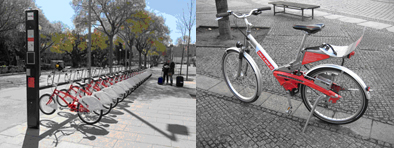
When I am stucked in a car jam, at rush hour, the information I may need is which is going to be the best path among different options. The GPS on board should be able to address me through the best course, on real time, with current data. Even more, it should provide me information about the best available, and cheapest, parking areas. On top of that, information about the real time availability of places at the best parking option. But before that, I would require that the GPS on board advices me on where to slow down. And this not because I may get otherwise a ticket for my speed rate, but because I usually have problems noticing the speed signals on the road (such a system would be based on «informing» the citizen rather on «fining» him/her; a clear turn on public policies addressing the traffic issues).
When I get out of the car, I would need information about where to get the best price for the product I am looking for. The system should tell me at which shops it is available, and at which specific price. Incidentally, such a «value proposal» is being develop by Slifter, a service being tested in some US cities. Slifter let shoppers to publicize the items thet have to sell, so that consumers around the shop (proximity marketing) may find the best place to get them. So it is a sort of GPS for local product location.
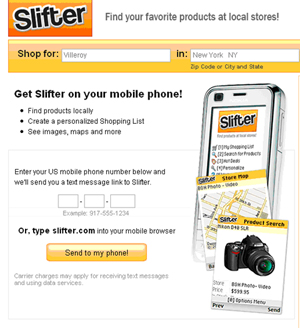
This will also work when looking for a place to get lunch. And, on top of that «layer» of data, another social system may provide information about what your buddies experienced at that specific spot on Earth. Beyond that, you may be willing to know if any of your buddies is around there by then.
So what?
The message is that the current wave of information systems goes way beyond the mere focus on accesibility. The main concern is not one of getting access to the network anywhere. But, more exactly, one of getting the information you may need at the place and time that you need it.
So far, so much for the small talk on information ubiquity (access from anywhere). Let’s focus now on information ibiquity (getting the right information when and where you need it). The amount of systems and services that this approach could unveil is simply unimaginable.
(Message 958. Series started in 1995)



Sorry, the comment form is closed at this time.